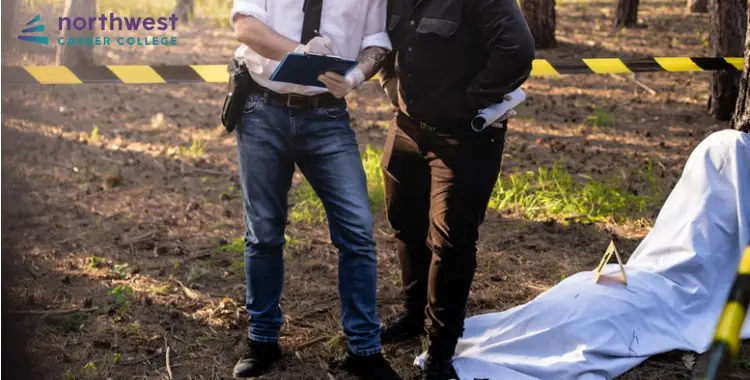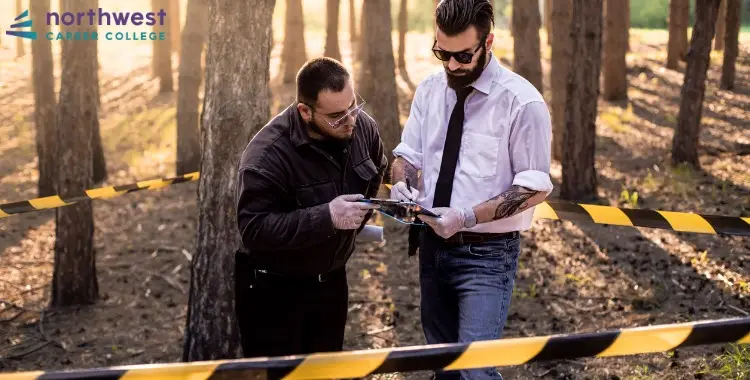The Influence of Media on Public Perception of Crime
- Criminal Justice
- February 25, 2025
- 14.7k views
- 4 min read

In modern media coverage, social media, mainstream news outlets, and television entertainment play pivotal roles in shaping public perceptions of crime. Such media representations can significantly sway public views on the prevalence, nature, and severity of crime in their local communities and at a national level. These representations can also shape opinions about the fairness of the criminal justice system and the need for reform. Modern criminal justice classes now include media literacy components to help future professionals understand and address these biased representations of crime in various media outlets.
In this article, we will explore some of the current trends prevalent in the United States, such as the overreporting of certain types of crimes on social media and biased portrayals of the criminal justice system in the news and entertainment media. We will also explore how these trends directly influence individual perceptions of crime and their broader implications for societal attitudes and policies related to crime.
Table of Contents
Overrepresentation of crime in the news
Each media reference above has a unique role in the public perception of crime. However, combined, they undoubtedly reinforce the public perception that criminal activity is a more significant and imminent threat in the United States than is justified by publicly available crime data.
For example, certain crimes are over-reported on social media platforms like Facebook. Specifically, crimes involving black suspects tend to be more prominent and shared more frequently on these platforms, creating a skewed view of race and crime. A recent study by the Stanford Law School shows that Black suspects are described in 32% of crime-related posts on social media but represent only 20% of arrests in the United States.
As individuals disproportionately share news about such crimes via social media platforms, platform algorithms search for similar stories to insert into their feeds. This reinforces their original beliefs that such crimes are increasingly prevalent and incentivizes traditional media outlets to generate more content about similar crimes. This interplay between social media and traditional news outlets creates a self-reinforcing negative cycle.
Thus, local cable networks and major news outlets are financially incentivized to overrepresent crimes online and on television news channels. It drives viewer engagement (similar to social media) and improves their ability to raise advertising prices. In addition to being overreported, crimes are often sensationalized, further increasing viewer engagement with their content.
Read More: Role of Forensics in Modern Criminal Investigations
Albeit suitable for their business model, this approach has an apparent downside. By providing viewers with a steady stream of criminal news stories, news outlets give the public more reasons to be afraid than they would be just living their lives normally. It also drives the perception that crime is more prevalent than is statistically accurate.
Overrepresentation of crime in entertainment
Considering the previous section of this article, it is not much of a stretch to see why entertainment companies incorporate sensationalized criminal activity into television shows and movies at a disproportionately high rate.
As can be observed within social media and traditional news media outlets, representations of such criminal activity drive viewer engagement with entertainment content. Increased engagement for entertainment content ultimately drives more value to content creators and reinforces their financial incentives to focus on these storylines disproportionately.
While entertainment companies may not explicitly seek to portray specific local or national communities as prone to high levels of criminal activity, these narratives subconsciously reinforce the same messages being delivered via news platforms.
Conclusion
In conclusion, social media platforms, modern media outlets, and entertainment companies have overrepresented and sensationalized the frequency of crimes in various settings and those committed by various groups of people, creating a negative impact on society.
That said, this article did not explore social media platforms, modern media outlets, and entertainment companies’ positive impact on society generated by drawing attention to the excesses of certain law enforcement officers and the overall criminal justice system. This represents an area of tremendous opportunity for our country to come to terms with how we can address crimes in a more effective and less biased manner and will be the topic of a future article.





